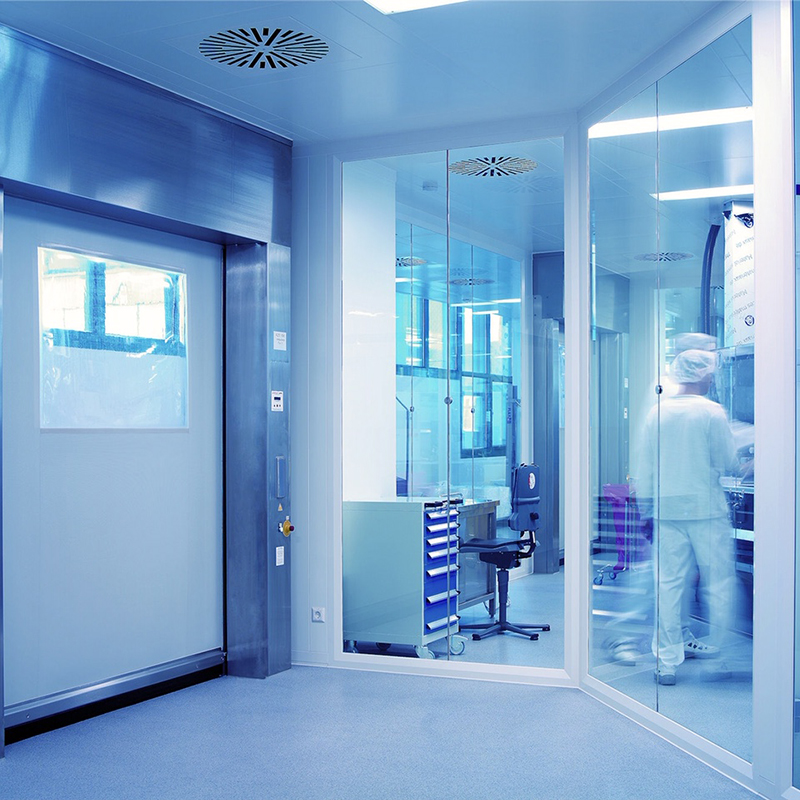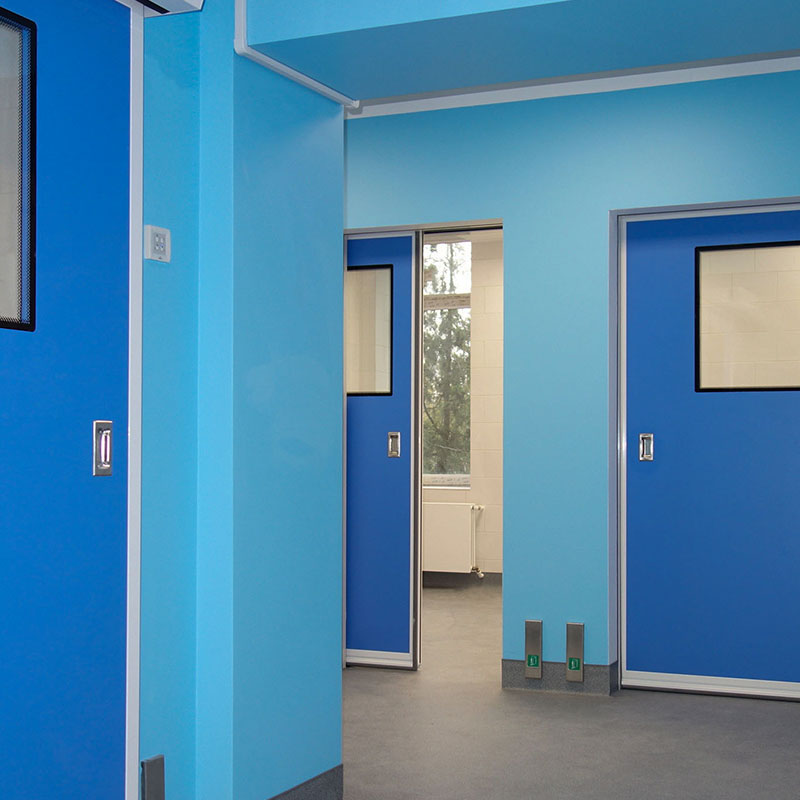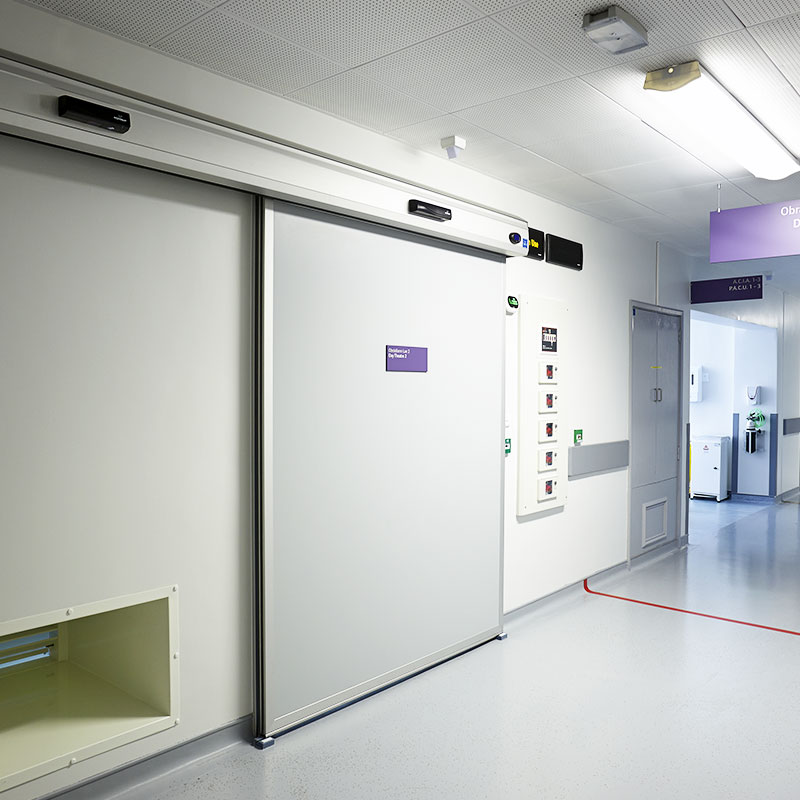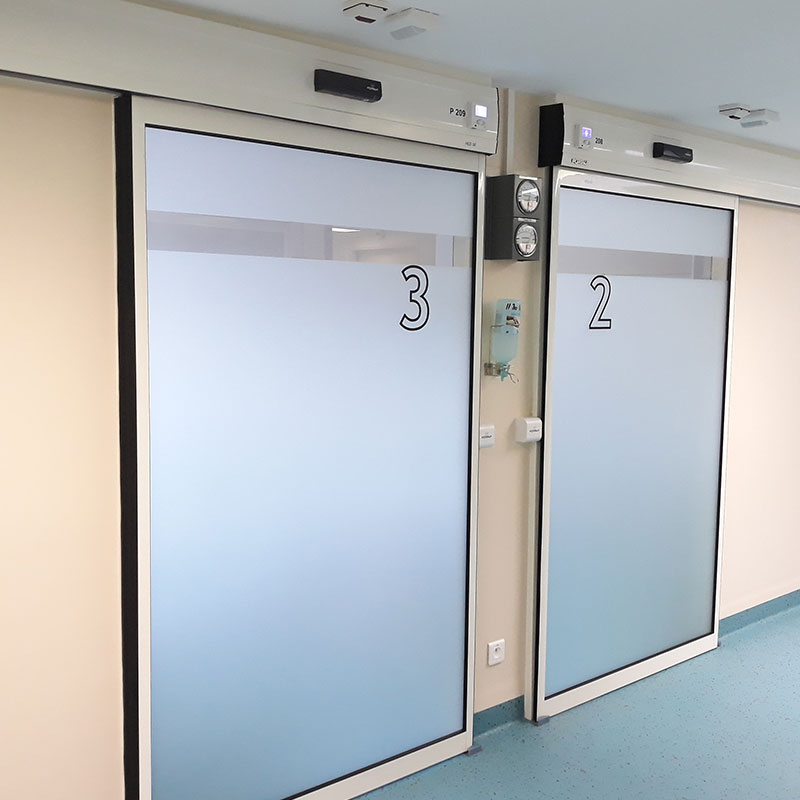Cleanroom solutions

Our cleanroom division is there to provide you with its expertise and to support you in your automation projects. We have developed a very wide range of technical solutions, which enables us to respond with relevance.
This expertise and range of solutions has enabled us to build a well-established reputation internationally, particularly in the field of laboratories, healthcare, production industries and logistics areas.
Sliding doors
HDS CLEAN hermetic door
HDS Clean X-ray door
Our strengths
We are able to intervene at all stages of your projects: study, design, customised production, installation and maintenance of your automatic doors.
Our design offices will work with you to qualify the technical solutions required to meet your specifications.
Whether it is a question of controlling atmospheric conditions, resistance to pressure differences, asepsis, operating intensity, protection against shocks, compliance with standards, safety of people and property, we choose the most suitable processes and materials.
Standards

Portalp offers certified doors that meet the most stringent requirements.
ISO Standard – 14644-1
(Particulate and chemical contamination)
This certification specifies the classification of the particulate cleanliness of the air.
The maximum permissible concentrations of particulate matter range from ISO 1(most stringent class) to ISO 9.
ISO Standard – 14698-1
(Microbiological contamination)
Specific to the pharmaceutical industry, this standard, dedicated to the control of biocontamination, deals with the monitoring methods to be used according to the medium/fluid.
The dust classifications are defined according to the criticality of the activity.
The tolerance in concentration per m3 of air of contaminants (dust and micro-organisms) is organised in classes ranging from A (for high risk areas) to D (for less critical areas with controlled atmosphere).




 We are very sensitive to the protection of your personal data. We do not use Google Analytics in order to keep control of the data you entrust to us. This data is therefore not transferred to the United States.
We are very sensitive to the protection of your personal data. We do not use Google Analytics in order to keep control of the data you entrust to us. This data is therefore not transferred to the United States.